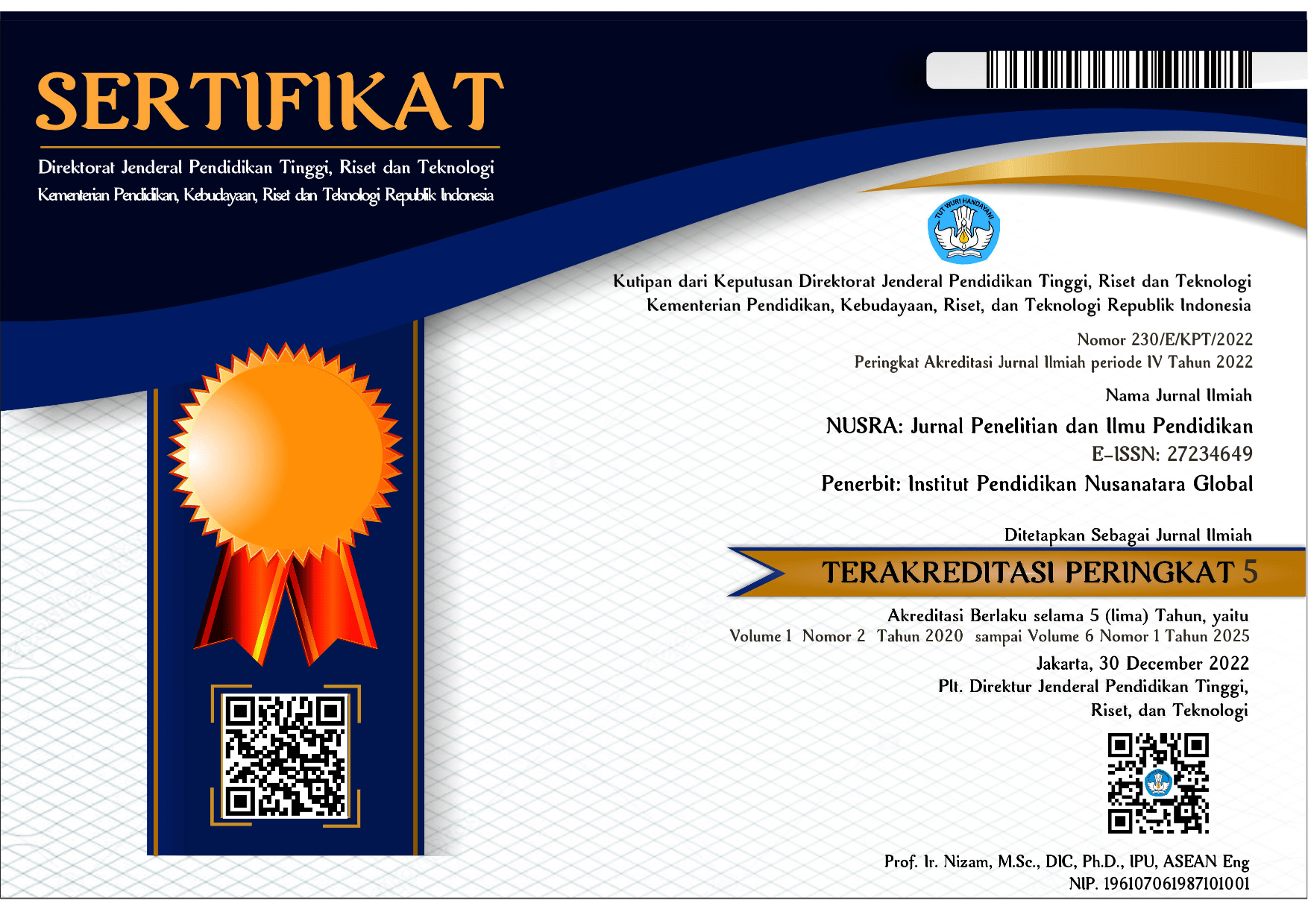Students’ Pronunciation Skill on the Ability of Suprasegmental and Segmental Aspects in English Pronunciation
DOI:
https://doi.org/10.55681/nusra.v5i1.2196Keywords:
Students’ Pronunciation, Ability, Suprasegmental and Segmental AspectsAbstract
This article investigates the correlation between students' overall pronunciation proficiency and their competence in both suprasegmental and segmental aspects of English pronunciation. The study aims to shed light on the interplay between these two fundamental elements and their collective influence on students' pronunciation skills. Employing the qualitative approach, the research draws upon data collected from a diverse language background of the learners, exploring the intricacies of suprasegmental features such as stress, intonation, and rhythm, alongside the segmental elements involving individual sounds, phonemes, and their combinations. The research reveals nuanced insights into the challenges students face in mastering these pronunciation aspects and identifies potential factors contributing to any observed discrepancies. It also delves into the pedagogical implications of addressing both suprasegmental and segmental aspects concurrently in language instruction. The findings contribute to the ongoing discourse on effective pronunciation teaching methodologies and underscore the importance of a holistic approach that integrates suprasegmental and segmental elements to enhance overall pronunciation competence. The research presented herein serves as a valuable resource for enhancing the understanding of the intricate relationship between suprasegmental and segmental aspects in pronunciation, ultimately contributing to the improvement of language teaching and learning practices.
Downloads
References
Burns, A., & Claire, S. (2003). Clearly speaking: pronunciation in action for teachers.
Cruttenden, A. (2014). Gimson's pronunciation of English. Routledge.
Fromkin, V., Rodman, R., & Hyams, N. (2018). An introduction to language. Cengage Learning.
Gall, M. D., Gall, J. P., & Borg, W. R. (2017). A. Method of the Study. In A Cohesion And Coherence On Students’ exposition Writing (p. 39).
Hewings, M. (2004). Pronunciation practice activities: A resource book for teaching English pronunciation. Cambridge University Press.
Islam, S. M. (2020). Segmental Errors in English Pronunciation of Non-Native English Speakers. Journal of Education and Social Sciences, 16(1), 14-24.
Khansir, A. A., & Tajeri, M. (2015). The relationship between spelling and pronunciation in English language. Language in India, 15(12), 57-69.
Low, E. L. (2021). EIL pronunciation research and practice: Issues, challenges, and future directions. RELC Journal, 52(1), 22-34.
Kenworthy, J. (1987). Teaching English pronunciation. New York, NY: Longman. O’Connor, J. D. (2009). Better English Pronunciation. London: Cambridge University Press.
Pennington, M. C., & Rogerson-Revell, P. (2019). English pronunciation teaching and research. Research and Practice in Applied Linguistics.
Downloads
Published
How to Cite
Issue
Section
License
Copyright (c) 2024 Ramilia Laksmi Utari Umar, Nur Fitriyanti Aspany

This work is licensed under a Creative Commons Attribution-ShareAlike 4.0 International License.














